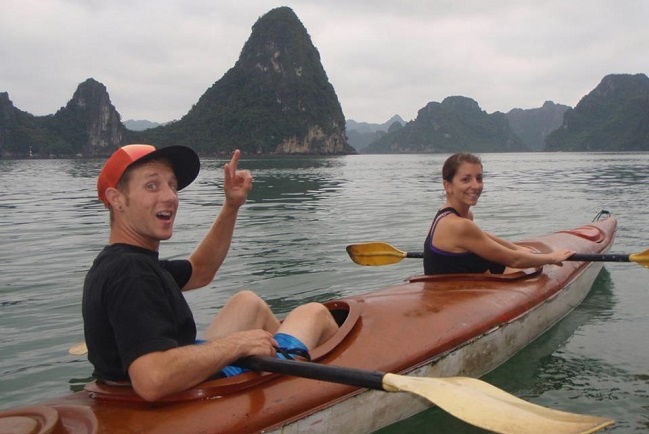Teaching English in Peru: Preparing for the Worst, It's Not What I Thought
International TEFL Academy graduate Zac Heisey talks about his remarkable journey of teaching English in Lima, Peru for the very first time.
Written By: Zac Heisey | Updated: June 29, 2023
Written By: Zac Heisey
Updated: June 29, 2023

"You’re moving to Peru?! Isn’t it like, super dangerous and stuff?”
In the weeks leading up to my departure to Lima, this had become the obligatory response from friends, family, my doctor, the clerk at the grocery store, and pretty much anyone else I told about teaching English in Peru.
It became such a standard response from anyone I talked to, that I also developed a canned follow-up statement of my own:
“I mean, yeah, in some parts I guess. I am normally pretty cautious when I travel though. Plus, I plan to stay in a nicer neighborhood in Lima, so I should be fine.”
But all the questions eventually got me thinking:
- Was it really a dangerous place to be?
- What would I do if I got myself into a bad situation?
- Was I really as prepared as I thought I was?
Read more: Teach English in Peru
What I would come to find out, of course, is that I wasn’t as prepared as I thought I was, but in much more mundane ways than my overall safety.
In the stress and chaos that comes with preparing to live abroad long term, it is easy to overlook some of the more important questions about your new life. I had brushed aside questions from concerned family members and close friends about my health, safety, and general well-being in a foreign country with a wave of the hand, assuring them, “I deal with it when I have to.”
The bulk of my research had been focused on finding a teaching position in Lima, and I hadn’t really thought much about the logistics of living abroad. Now that my departure date was fast approaching, I began to have doubts. What if I did have to deal with those things? I’m not ashamed to say that I had a few small panic attacks in the last 48 hours before boarding my plane to Lima.
Read more: What Are the Requirements for Teaching English in Peru?

My arrival in Lima was not the end of the logistical roller coaster, but rather an intensified part of the ride. I got into the airport after midnight local time, fumbling my way through Spanish signs pointing me to the proper baggage claim area where I waited nervously for my belongings – which were the last off of the plane.
My new host (and first friend) in Lima whisked me and my truckload of stuff through the congested roads of Callao, whizzing past slower vehicles and dodging late-night partiers dancing in the streets. That night, we got to know each over a bottle of cheap Pisco, sharing our travel stories, discussing what life was going to be like for an American in Lima, and predicting how bad our hangovers would be (for the record, they were terrible).
Over the next three days, I went to teaching interviews with English language institutions in every corner of Lima. Because of the extensive research, I had done on the teaching job market in Lima, along with the plethora of job guidance resources provided by International TEFL Academy after finishing my online TEFL course, I was able to land about ten interviews in a week’s time.
However, while I was preoccupied with securing and preparing for job interviews, I was also faced with new day-to-day issues that I never really had to deal with back home in the U.S.
For starters, I underestimated the difficulty of getting from point A to point B in a foreign country. The process of finding the specific location of my next interview on Google Maps, flagging a taxi, clumsily explaining in Spanish where I needed to go, negotiating a price, and arriving on time was just as stressful as the interview itself.
Combined with the blistering heat of Lima’s Summer, I would often arrive at my interviews sweating and disheveled. Then there were the issues with the water. Lima’s plumbing is notoriously shoddy, so it was not uncommon for me to rush off to an interview after taking an ice-cold shower, or in some cases, no shower at all.
Unfortunately, my water issues were not limited to bad plumbing. I learned quickly that rinsing your vegetables with tap water was a good way to spend a lot of time on the toilet – provided you can flush it.
Somehow, through all the madness of my first week in Lima, I managed to land a teaching position with a private language company. On the Sunday before my first class, I sat on the terrace of my new apartment (which finding and moving into was a Herculean feat itself), and realized that all of the logistical nightmares that I had endured up to that point had negatively impacted my view of Lima.
Read more: How Much Do English Teachers Make in Peru?
I had not had the chance to explore my new neighborhood, try new restaurants, talk to local people, go out with new friends, or do any of the things that I had dreamed of doing while planning my new life in Peru. These things had taken a back seat to getting a job, securing an apartment, dealing with plumbing issues, finding a good pharmacy, and figuring out the bus routes – all of the things I had failed to really think about before arriving in Lima.
I decided to take a walk through Parque Kennedy, a popular weekend hangout spot in the neighborhood of Miraflores. For the first time, I took in simple things like the smells coming from street food vendors, the sounds of children laughing as they chased each other on the playground, and the smell of the ocean air coming from La Costa Verde.
 Since it was Sunday, the park was packed with people – families going for a morning walk together, couples holding hands, and old men reading El Comercio while getting their shoes shined. I realized then that all of those logistical issues, however annoying, were a part of the experience of living abroad. Everyone in the park had to deal with the same issues as I did, probably more so.
Since it was Sunday, the park was packed with people – families going for a morning walk together, couples holding hands, and old men reading El Comercio while getting their shoes shined. I realized then that all of those logistical issues, however annoying, were a part of the experience of living abroad. Everyone in the park had to deal with the same issues as I did, probably more so.
No matter how much planning I did, accounting for these problems was nearly impossible. It was all part of living in Lima. Although in the moment it can be easy to forget, the day-to-day issues are what add to the authenticity of the experience. They make me feel less like a tourist, and more like a local.
As I made my way back to my apartment, I passed my neighbor on the street. “Buenos dias,” I said, “Como estas?” “No es bueno. Mi agua no está funcionando,” he replied. I wondered if he had planned for that.
Posted In: Teach English in Peru, Teach English in Latin America, Lima
Zac Heisey
Hailing from San Jose, CA, Zac Heisey made the move to teach English in Peru. After earning his degree, he spent 4 years working for an Internet marketing company in San Diego. When he finally decided he had enough of the 9-5 office world, he packed his backpack and traveled through Asia for 3 months, which inspired him to earn his TEFL certification and give back to the communities he was visiting.
Want to Learn More About Teaching English Abroad & Online?
Request a free brochure or call 773-634-9900 to speak with an expert advisor about all aspects of TEFL certification and teaching English abroad or online, including the hiring process, salaries, visas, TEFL class options, job placement assistance and more.







